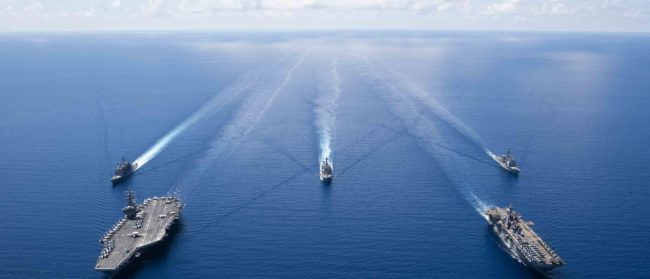In the fading of the day of 7 May 1954, Vietnamese troops ran across the Bailey bridge over the River Nam Yum that ran along the floor of the valley of Dien Bien Phu. Within a short time they had taken the Headquarters of the French base ending a two month siege that had cost them some 20,000 casualties. The last shots were fired about 5pm.
Although the Viet Minh were victorious in that far northwestern valley near the Laos border, fighting in other parts of the country would continue for the next two months as France and the Democratic Republic of Vietnam (DRV) tried to wrangle an end to the war at an international conference in Geneva.
Both sides were bloodied and worn and both desperately wanted to end the fighting. In France the conflict was known as ”the dirty war”. The Viet Minh had been fighting since 1946 against France and the US, who at that time was underwriting 80% of the war. Since the later part of 1953, Ho Chi Minh had sent messages the DRV was willing to negotiate an end to hostilities.
For a long time it has been believed the Vietnamese were bullied and coerced by its big Communist brothers, China and the Soviet Union, into accepting a deal that undercut its own interests and its revolution. The Soviet’s were emerging from the cold dark age of Stalin who had died in March 1953 and were considering a less confrontationist and economically costly world stance.
The Chinese were considered to have influenced the Vietnamese significantly. According to this analysis, China’s objective was to enhance its international standing as a “peacemaker” – only recently it was involved in the Korean War and earlier staged its own violent revolution. Second, it wanted to avoid further US interference in Indochina. There was also an argument that China wanted a divided and weak Vietnam on its southern flank, with the DRV acting as a communist buffer between it and a US dominated South Vietnam.
The general consensus was the DRV had sacrificed imminent victory over all Vietnam at the behest of the communist giants with other international objectives. But more recent research has raised the possibility that Vietnam may have been keener to make the deal that was eventually struck than had previously been thought.
In essence, the deal divided Vietnam into two roughly equal-sized zones; DRV in control of the north with the south controlled by a French-created State of Vietnam (SOV). It later morphed into the Republic of Vietnam under the presidency of Ngo Dinh Diem. Each side’s forces would withdraw to their respective zones, civilians could migrate to the zone of their choice, and in time elections would be held to establish a government for a unified Vietnam.
A ceasefire with control over one area, would let the north Vietnamese demonstrate the benefits of an independent socialist Vietnamese government

This required the DRV or Viet Minh to give up a lot of territory and limited its political control to one half of the country.
However, the area the Viet Minh controlled was outside the cities. They did consider a deal that included multiple zones based on the disposition of their troops but this left the French with control of the major ports and the all-important Ha Noi-Route 5-Hai Phong corridor in the north.
The DRV Army was keen to fight on thinking it could achieve total victory. The political wing doubted they could enthuse the population much longer. A ceasefire with control over one area, would let them demonstrate the benefits of an independent socialist Vietnamese government.
Essential to that was political control over large cities and their populations which had yet to experience the benefits in the liberated zones in the countryside.
Finally, the DRV could greatly enhance its international standing by concluding an agreement with one of the great powers in the form of France. The Geneva talks did not include the SOV and an agreement with France would further legitimise the DRV’s claims to be the legitimate and only government of all Vietnam.
But perhaps the most important influence on the north Vietnamese was fear of the US. If they continued to fight the French, they feared even greater involvement by the Americans in their country.
Key to the agreement was the elections. But this was the one thing the north Vietnamese could not achieve. The plans for the elections were contained in a separate document called ‘Final Declaration of the Geneva Conference’, setting a timetable for them to be held in July 1956.
But with the Viet Minh almost certain to win the elections, the US and leaders in the South refused to sign the Final Declaration and they never happened. Partition would continue, with the US to becoming more and more involved.
But the DRV bought time to consolidate itself before the final act in the push for independence – the War of National Salvation Against America.
Walter Pearson is an Australian journalist, writer, documentary maker and two tour Vietnam Veteran who lives in Sydney after having spent most of the last decade and a half living or working in Vietnam.


